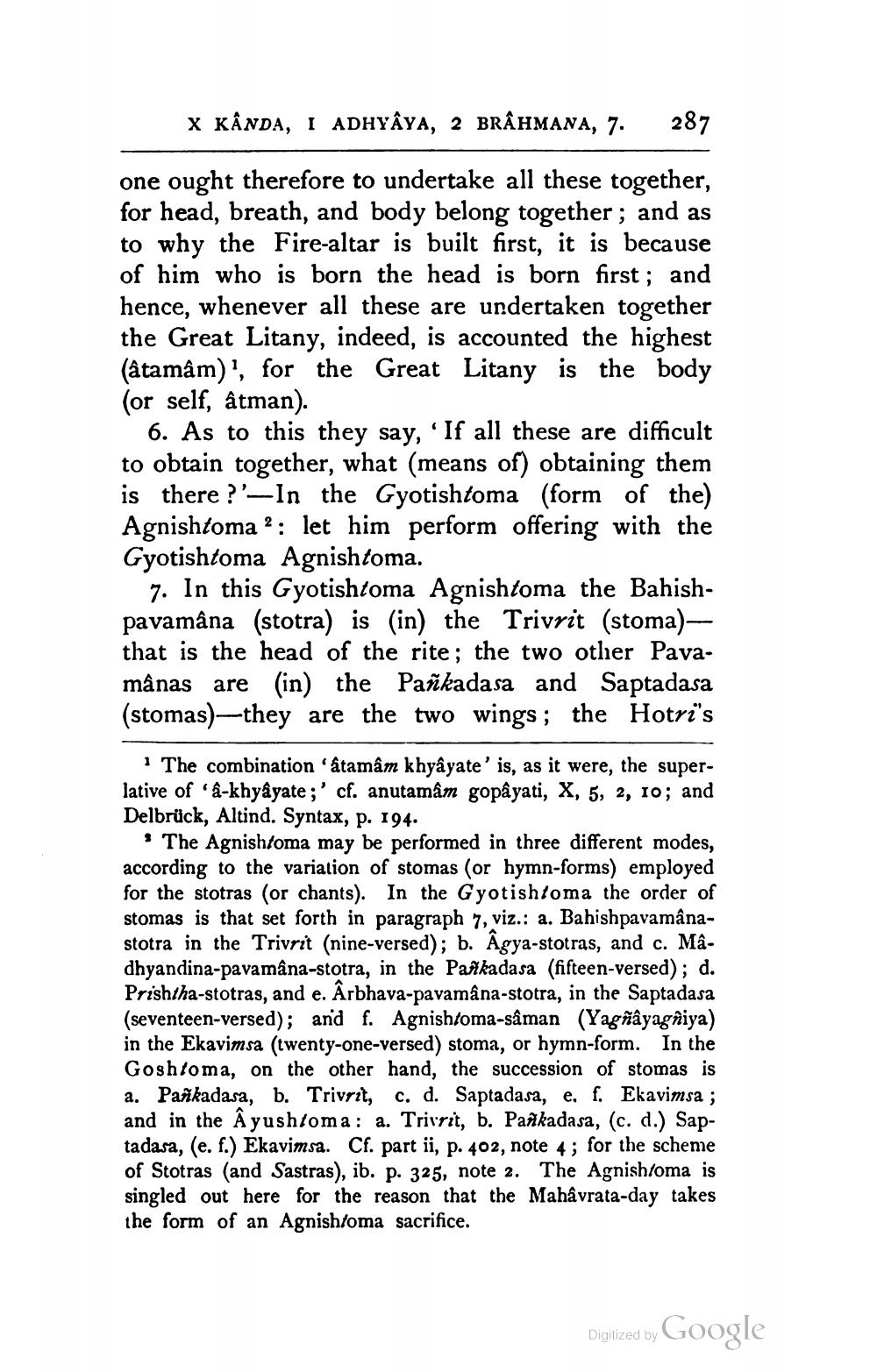________________
X KÂNDA, I ADHYAYA, 2 BRAHMANA, 7. 287
one ought therefore to undertake all these together, for head, breath, and body belong together; and as to why the Fire-altar is built first, it is because of him who is born the head is born first; and hence, whenever all these are undertaken together the Great Litany, indeed, is accounted the highest (âtamâm)', for the Great Litany is the body (or self, âtman).
6. As to this they say, 'If all these are difficult to obtain together, what (means of) obtaining them is there?'-In the Gyotishtoma (form of the) Agnishtoma 2: let him perform offering with the Gyotishtoma Agnishtoma.
7. In this Gyotishtoma Agnishtoma the Bahishpavamâna (stotra) is (in) the Trivrit (stoma)— that is the head of the rite; the two other Pavamânas are (in) the Pañkadasa and Saptadasa (stomas) they are the two wings; the Hotri's
1 The combination 'âtamâm khyâyate' is, as it were, the superlative of â-khyâyate;' cf. anutamâm gopâyati, X, 5, 2, 10; and Delbrück, Altind. Syntax, p. 194.
"
The Agnish/oma may be performed in three different modes, according to the variation of stomas (or hymn-forms) employed for the stotras (or chants). In the Gyotish/oma the order of stomas is that set forth in paragraph 7, viz.: a. Bahishpavamânastotra in the Trivrit (nine-versed); b. Agya-stotras, and c. Mâdhyandina-pavamâna-stotra, in the Pankadasa (fifteen-versed); d. Prishtha-stotras, and e. Ârbhava-pavamâna-stotra, in the Saptadasa (seventeen-versed); and f. Agnish/oma-sâman (Yagñâyagniya) in the Ekavimsa (twenty-one-versed) stoma, or hymn-form. In the Goshtoma, on the other hand, the succession of stomas is a. Pažkadasa, b. Trivrit, c. d. Saptadasa, e. f. Ekavimsa; and in the Ayushioma: a. Trivrit, b. Pankadasa, (c. d.) Saptadasa, (e. f.) Ekavimsa. Cf. part ii, p. 402, note 4; for the scheme of Stotras (and Sastras), ib. p. 325, note 2. The Agnish/oma is singled out here for the reason that the Mahâvrata-day takes the form of an Agnish/oma sacrifice.
Digitized by
Google




